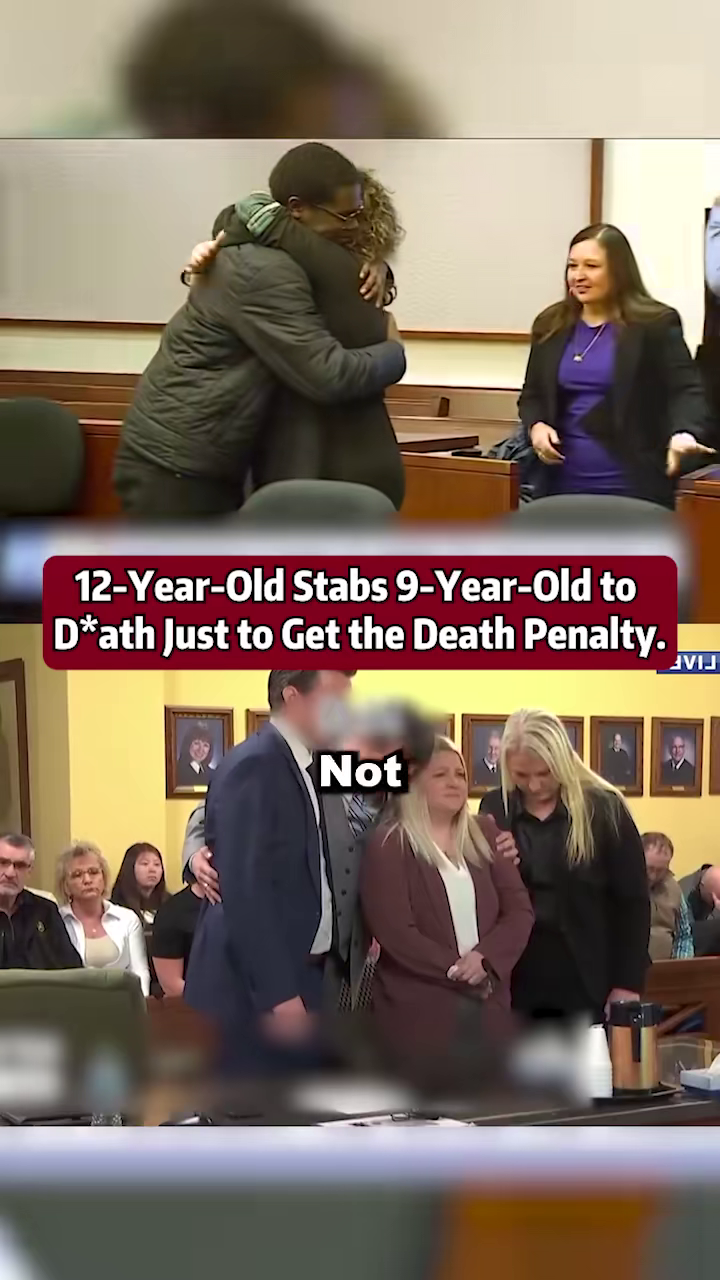In 2014, a quiet playground in Kentwood, Michigan, became the center of a heartbreaking story that would capture national attention. Jamarion Lawhorn, a 12-year-old boy, stbbd 9-year-old Michael “Connor” Verkerke, leaving the community and the nation questioning the circumstances behind such a young child committing a fatal act.
The case raised important questions about child abuse, juvenile justice, mental health, and parental responsibility, and continues to be studied for its complex circumstances.
The Crime: Understanding What Happened
On the day of the incident, Jamarion approached the playground where Connor and other children were playing. Investigators later reported that Jamarion told authorities he had become “fed up with life” and wanted to be locked up. According to reports, he sought serious punishment, including life imprisonment or the death penalty, as a way to escape his abusive home situation.
The fatal stbb occurred quickly, leaving the 9-year-old boy dead. The incident shocked neighbors and led to immediate police action. This tragedy was not just a random act of violence — it was influenced by a combination of childhood trauma, mental health issues, and systemic failures.
Jamarion Lawhorn: Background and Family Circumstances
Before the incident, Jamarion lived in a household marked by reported abuse and neglect. Investigators later revealed:
-
Allegations of physical and emotional mistreatment by his mother and stepfather.
-
Evidence that Jamarion and his siblings were exposed to neglectful and harmful environments.
-
Signs that Jamarion had previously sought help for mental health struggles, feeling trapped and overwhelmed.
These factors were central to his defense, which argued that his actions were influenced by prolonged abuse and emotional trauma.
Connor Verkerke: A Young Life Lost
Connor, the victim, was only nine years old at the time of the incident. Friends and family described him as a cheerful, bright, and playful child who loved spending time outdoors.
His death left a profound impact on the community, particularly on his family, who had tried to ensure the safety of their children but were unable to prevent the tragedy.
Investigation and Arrest
After the incident, police quickly apprehended Jamarion. He reportedly cooperated with authorities, explaining his motive as an attempt to escape his home life. The investigation confirmed the abusive conditions he endured and highlighted his troubled mental state.
Authorities also noted the importance of early intervention, emphasizing that Jamarion’s case might have had a different outcome if child protection services had successfully addressed the abuse sooner.
Trial and Legal Proceedings
Jamarion was charged with first-degree stbb, a serious offense that is rarely charged for individuals so young. Due to his age, the court had to consider:
-
Juvenile vs. adult charges: While initially charged as an adult, Michigan law allows for blended sentencing to address cases where young offenders may be rehabilitated.
-
Mental health considerations: The defense presented evidence of abuse and psychological issues, suggesting that his decision-making was impaired.
-
Parental responsibility: His mother and stepfather were later charged with child ab*use in connection with the conditions in which Jamarion and his siblings lived.
Blended Sentence: Rehabilitation and Punishment
Jamarion received what is known as a blended sentence, meaning:
-
He would remain in a juvenile facility until he turned 21.
-
At that point, a judge would determine whether he could be released or transferred to an adult prison.
This type of sentence is designed to balance accountability and rehabilitation, particularly for young offenders whose actions are influenced by traumatic childhood experiences.
Child Abuse and Mental Health Impact
Experts highlighted the relationship between childhood trauma and juvenile offending:
-
Children exposed to physical and emotional abuse may develop severe behavioral and mental health issues.
-
The defense argued that Jamarion’s home environment contributed significantly to his decision to commit a fatal act.
-
The case illustrated how neglect and abuse can have long-term consequences, sometimes culminating in tragedy.
Psychologists emphasized that early intervention and therapy might have prevented this outcome, highlighting systemic gaps in child welfare monitoring.
Community Reaction and Public Debate
The case sparked widespread debate:
-
Many questioned whether Jamarion should have been tried as an adult.
-
Others discussed parental responsibility, particularly the role of his mother and stepfather in creating the conditions that led to the incident.
-
Social media and local news outlets debated whether society adequately supports at-risk youth and whether punitive measures alone address the root causes of juvenile crime.
The Role of the Parents
Jamarion’s mother and stepfather were later charged with child ab*use. Reports suggested that they:
-
Created an environment that was neglectful and harmful.
-
Failed to address their child’s behavioral and emotional struggles.
-
Contributed indirectly to the circumstances leading to the fatal stbb.
The case highlighted the importance of parental accountability, not just for direct actions, but also for the environment children grow up in.
Lessons from the Case
The tragic events of Kentwood, Michigan, offer several key lessons:
-
Early intervention matters: Identifying and addressing child ab*use promptly can prevent escalation.
-
Mental health support for children: Young individuals in abusive environments require therapy, counseling, and monitoring.
-
Juvenile justice systems must balance rehabilitation and accountability: Blended sentencing offers a framework to address both.
-
Parental responsibility and community vigilance are critical: Family, schools, and social services play a role in safeguarding children.
Conclusion
The case of Jamarion Lawhorn and Connor Verkerke is a tragic example of how childhood trauma and abuse can lead to catastrophic outcomes.
While Jamarion’s actions were shocking and irreversible, they also serve as a stark reminder of the importance of child protection, mental health intervention, and parental responsibility.
Connor’s life was lost far too soon, but the lessons from this case continue to influence discussions on juvenile justice, child welfare, and systemic reform.

